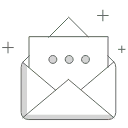What is Biliary Atresia?
-
-
- Biliary Atresia is a Liver disorder that affects newborn babies.
- Biliary Atresia causes jaundice that continues even after 2 weeks of birth in infants.
- A surgical procedure known as the Kasai procedure, or Kasai Portoenterostomy or Biliary Atresia Surgery is used to re-establish bile flow as early as possible to minimize liver damage.
- This surgical procedure clears the blockage and allows the bile to flow to the intestine and helps as a long-term solution. However, if the liver is badly damaged, a Liver transplant may be necessary.
-
How does Biliary Atresia Develop?
Cells in the liver produce liquid called bile. Bile helps to digest fat; and carries the waste products from the liver to the intestines for removal from the body. The biliary system consists of ducts and channels. When the biliary system works normally, then bile drains from the liver into the intestines.
If an infant has Biliary Atresia, then the bile that flows from the liver to the intestine is blocked. This will cause the bile to be trapped inside the liver, and the baby develops jaundice. The trapped bile in infants can quickly cause liver damage and scarring (cirrhosis). This eventually leads to liver failure.
Early cirrhosis and liver failure can be prevented by early diagnosis and surgery. Surgery removes the blocked bile ducts and connects the liver to the intestine to increase bile flow.
What are the Causes of Biliary Atresia?
The causes of Biliary Atresia cannot be completely understood. In some children, Biliary Atresia occurs because the bile ducts did not form properly during pregnancy. In other children with Biliary Atresia, the bile ducts could be damaged by the body’s immune system because of a viral infection after birth.
What are the Symptoms of Biliary Atresia?
In the first few weeks of life, babies who have Biliary Atresia will have yellow skin and whites of the eyes. This yellow color is called Jaundice. Most babies with jaundice are healthy because the jaundice fades in a few weeks. But in Biliary Atresia, the jaundice does not fade and gets worse over time. However, the symptoms of Biliary atresia are as follows:
-
-
- Dark urine – If the bilirubin increases in the blood, it is then filtered by the kidneys and removed in the urine causing dark urine.
- Abnormal color stools (white or clay-colored stools) – This happens when no bile or bilirubin is emptied into the intestine. Because of the Bile the stools color becomes green or brown. But without bile or bilirubin, the stool is often white or grey color.
- Weight loss and irritability − develops when the level of jaundice increases.
-
When should I seek help for my Infant with Jaundice?
You should seek help for your infant with jaundice in the following conditions:
-
-
- If your newborn baby has persistent jaundice till 2 weeks of age
- If your newborn baby gets jaundice after 2 weeks of birth
- If your newborn baby has pale, white or clay-colored stools
- If your newborn baby passes yellow or dark urine
-
Want more clarification about medical expense & treatment plan?
Plan Your Biliary Atresia Surgery in India
Get a Free Doctor's OpinionWhatapp UsHow Is Biliary Atresia Diagnosed?
Jaundice may be present with other liver disorders. Several tests are needed for the right diagnosis.
-
-
- Blood tests are done to examine any liver function abnormalities.
- An abdominal ultrasound shows if there is a small gallbladder or not. The gallbladder stores bile. If it is missing, that indicates Biliary Atresia.
- A Liver Biopsy inspects if an infant has Biliary Atresia or not. In a liver biopsy, a small sample of the liver is removed with a needle. That sample is examined under a microscope. If the biopsy shows that the infant has Biliary Atresia, then further surgery will confirm the diagnosis and treat the condition.
- Intraoperative cholangiogram is a special kind of X-ray imaging that is used during surgery. By injecting a dye in the gallbladder and bile ducts, the surgeon can view a live video of the bile ducts and see if there is a blockage.
-
If the surgeon confirms Biliary Atresia, they will perform the Kasai procedure and remove the blockage.
How is Biliary Atresia Treated?
Biliary Atresia cannot be treated with medication. A surgery called Kasai procedure makes a way for the bile to flow from the liver into the intestine.
Step 1 – The surgeon removes the damaged ducts (This is called Extrahepatic ducts).
Step 2 – The surgeon then finds the smaller ducts that are still open and draining bile.
Step 3 – The surgeon then attaches a loop of intestine to the liver. This will allow the bile to flow from the remaining healthy bile ducts into the intestine.
Infants are usually in the hospital for seven to 10 days to heal.
What happens after Biliary Atresia Surgery?
After the Kasai procedure, long-term antibiotic therapy is administered to reduce the risk of infection. Additional medications may also be used to increase bile flow and help the surgery to be successful.
The Kasai procedure is successful in 60 to 80 percent of the patients. This means that bile drains from the liver and the jaundice level goes down.
The Kasai procedure is not a permanent cure for Biliary Atresia. But it allows infants to grow and stay healthy for many years. About 20% patients who undergo a Kasai procedure will not need a Liver transplant. However, the majority will need a Liver Transplant.
Biliary Atresia Surgery at Treatment Possible:
Treatment Possible is associated with the Best Hepatologists for pediatric Biliary Atresia who are experienced in operating complex cases and ensure the highest success rate. We only work with Top 10 hospital for Biliary Atresia Treatment in India that are equipped with OT that are compatible with complex Biliary Atresia operation.
Our understanding of the Indian Healthcare market and our valued relation with best hospitals for Biliary Atresia Treatment enables us to maintain the cost that are reasonable, affordable and transparent. The Biliary Atresia surgery cost in India through Treatment Possible can be 10-20% lower than similar companies in India and 50-60% cheaper than in other countries.
You can also send your medical reports for pediatric Biliary Atresia to care@treatmentpossible.com for free opinions and suggestions from The Best hepatologists in India with the hassle-free setup of post-operative recovery care, medical travel & stay during the Biliary Atresia operation. No matter what the health conditions, you always get good healthcare options and cost advantages from Treatment Possible.
Our Services
From Treatment To Recovery, We Are Always There With You!

Medical Visa Letter
We provide a Medical visa letter for which we require the scanned passport copies of the patient and attendant.

Arrange An Appointment With A Surgeon
We arrange for the appointment with the surgeon, confirm for the hospital room and operation theatre (if required)

Post Surgery Follow Up
We help you to fix your telephonic appointment for future follow-ups

Complimentary Pickup
We arrange for complimentary pickup and drop services from the airport.

All The Necessary Arrangements
We arrange for hospital admission, forex exchange, sim card and local assistance

No Need To Worry About Essential Expenses!
We help in sorting out the hospital bill, return ticket, medicines and other essential purchases.
